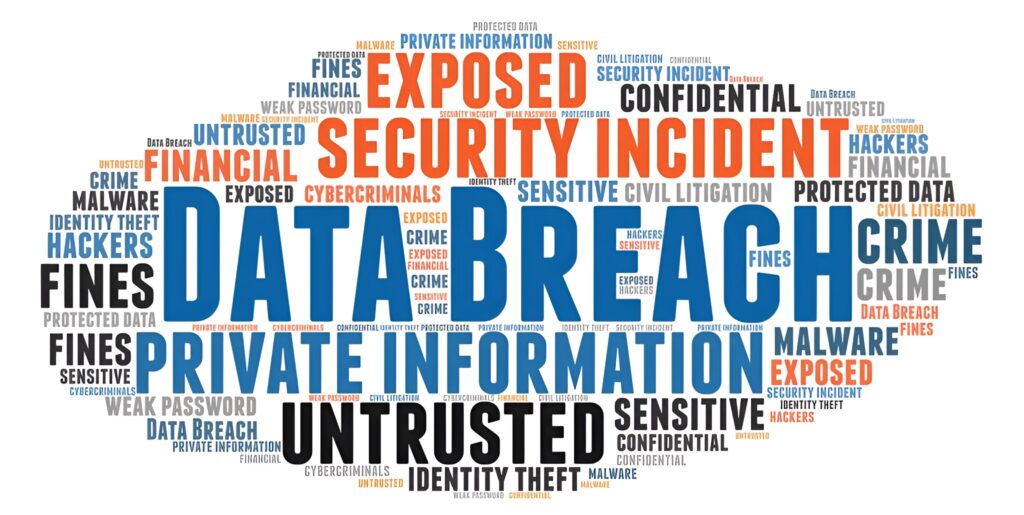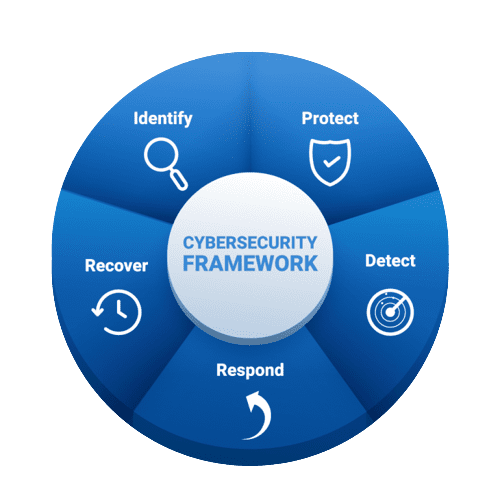
When it comes to security incidents, many types can occur. However, some are more common than others. Knowing the most common security incident can help you better prepare for and prevent it from happening to you.
Cybersecurity experts say the most common security incident is a phishing attack. Hackers use them to trick users into sharing sensitive information like login, credit card numbers, and SSN. They often work by sending deceptive emails, asking users to click on a link or download an attachment.
Phishing attacks can be difficult to detect, as the emails and websites they use often look very convincing.
However, there are ways to protect yourself from them, such as being cautious of any emails that ask you to click on a link or download an attachment, checking the sender’s email address and verifying it is legitimate, and using two-factor authentication whenever possible.
By being aware of the most common security incident, you can take steps to protect yourself and your sensitive information.
Understanding Security Incidents
Definition
A security incident is an event that indicates that an organization’s systems or data have been compromised or that measures put in place to protect them have failed.
In IT, a security event is anything that has significance for system hardware or software, and an incident is an event that disrupts normal operations.
A security incident can take many forms, including breaches, data breaches, security breaches, phishing attacks, ransomware attacks, cyberattacks, malware attacks, and vulnerabilities.
The most common security incidents involve unauthorized access attacks, where a threat actor attempts to access systems or data using an authorized user’s account.
Types of Security Incidents

Security incidents can be classified into different types based on their characteristics. Here are some of the most common types of security incidents:
- Ransomware attacks: Ransomware is a type of malware that encrypts files on a victim’s computer and demands payment in exchange for the decryption key.
- Phishing attacks: Phishing attacks are attempts to trick users into revealing sensitive information, such as login credentials or credit card numbers, by posing as trustworthy entities.
- Malware attacks: Malware is a type of software that is designed to harm or exploit a computer system. It can be used to steal data, damage files, or take control of a system.
- Vulnerabilities: Vulnerabilities are weaknesses in a system that can be exploited by attackers to gain unauthorized access or cause damage.
- Data breaches: A data breach is an incident where sensitive or confidential information is accessed, stolen, or disclosed without authorization.
- Security breaches: A security breach is an incident where a threat actor gains unauthorized access to a system or network.
- Cyberattacks: Cyberattack attempts to damage, disrupt, or gain unauthorized access to a computer system or network.
- Incident response: Incident response is the process of detecting, investigating, and responding to security incidents.
Understanding the different types of security incidents is essential for organizations to develop effective incident response plans and implement appropriate security measures to prevent them.
Common Security Incidents
As a business owner or an individual, you must know the most common security incidents that can affect your systems and data. Here are some of the most prevalent types of security incidents, along with their characteristics:
Overview
Security incidents are events that indicate that an organization’s systems or data have been compromised or that measures put in place to protect them have failed.
In IT, a security event is anything that has significance for system hardware or software, and an incident is an event that disrupts normal operations.
Security incidents can occur via a broad range of threats, including phishing attacks, ransomware attacks, malware infections, unauthorized access, and insider threats.
Phishing Attacks

Phishing attacks are one of the most common types of security incidents that businesses face. Cybercriminals use phishing emails to trick employees into revealing sensitive information or installing malware on their systems.
Spear phishing is a more targeted form of phishing that involves personalized messages that appear to come from a trusted source.
Ransomware Attacks
Ransomware attacks are another common type of security incident that can have devastating consequences for businesses.
Cybercriminals use ransomware to encrypt a victim’s files and demand payment in exchange for the decryption key.
Ransomware attacks can be initiated through various attack vectors, including phishing emails and drive-by downloads.
Malware Infection
Malware infections are a common type of security incident that can occur through various attack vectors. Cybercriminals use viruses, drive-by downloads, and exploitation to install malware on a victim’s system.
Once installed, malware can steal sensitive information, encrypt files, or cause other types of damage.
Unauthorized Access
Unauthorized access is a security incident involving unauthorized attempts to access systems or data using an authorized user’s account. This type of security incident can occur due to weak passwords, phishing attacks, or insider threats.
Being aware of the most common types of security incidents can help you take proactive measures to protect your systems and data.
By implementing security best practices and staying vigilant, you can minimize the risk of security incidents and protect your business from cybercrime.
Preventing Security Incidents
Preventing security incidents is crucial to protect your organization’s sensitive data and reputation. By implementing best practices and having an incident response plan in place, you can minimize the risk of security incidents.
Importance of Prevention
Preventing security incidents is essential because it is much easier and less costly to prevent them than to respond to them.
Security incidents can cause significant damage to your organization’s reputation, finances, and operations. Prevention helps you avoid the negative consequences of security incidents.
Best Practices
Here are some best practices to prevent security incidents:
- Use strong passwords or passphrases and change them regularly.
- Implement encryption to protect sensitive data, both in transit and at rest.
- Implement security measures like firewalls, intrusion detection systems, and antivirus software.
- Establish processes to monitor and control access to sensitive data.
- Use hardware that meets security standards and is regularly updated.
- Train employees to be aware of security risks and how to prevent security incidents.
- Regularly review and update security policies and procedures.
Incident Response Plan

Even with the best prevention measures in place, security incidents can still occur. Having an incident response plan can help you respond quickly and effectively to minimize the damage.
An incident response plan should include:
- A clear definition of what constitutes an information security incident.
- A triage process to determine the severity of the incident.
- A communication plan to notify relevant stakeholders.
- Steps to contain the incident and prevent further damage.
- Procedures for investigating and documenting the incident.
- A plan for restoring operations and data.
By following these best practices and having an incident response plan in place, you can minimize the risk of security incidents and respond effectively when they occur.
Responding to Security Incidents
When a security incident occurs, it is important to respond quickly and effectively to minimize damage.
An incident response plan can help guide your team through the process of identifying and containing the incident, investigating the root cause, and resolving the issue.
Here are the key steps involved in responding to security incidents:
Incident Triage
The first step in responding to a security incident is to triage the situation. This involves determining the severity of the incident and identifying any immediate threats to your organization.
You should also gather information about the incident, such as the time and date it occurred, the systems and data affected, and any potential causes.
This information can help you prioritize your response efforts and allocate resources appropriately.
Containment
Once you have triaged the incident, the next step is to contain it. This involves isolating affected systems and data to prevent further damage or spread of the incident.
You may need to disconnect affected systems from the network, shut down affected services, or take other measures to limit the impact of the incident.
It is important to act quickly to contain the incident and prevent it from spreading.
Investigation
After the incident has been contained, you can begin investigating the root cause. This involves analyzing data and logs to determine how the incident occurred, who or what was responsible, and what data or systems were affected.
You may need to interview employees or partners, review security policies and procedures, or conduct a forensic analysis of affected systems.
The goal of the investigation is to identify the cause of the incident and prevent it from happening again in the future.
Resolution
The final step in responding to a security incident is to resolve the issue. This involves restoring affected systems and data to their normal state, verifying that the incident has been fully contained, and implementing measures to prevent similar incidents from occurring in the future.

You may need to update security policies and procedures, implement new security controls, or provide additional training to employees.
It is important to document the incident and your response efforts for future reference.
In responding to security incidents, it is important to consider the cyber kill chain, which describes the stages of a typical cyber attack, including probing, delivery, exploitation, installation, command and control, and exfiltration.
By understanding the different stages of a cyber attack, you can better prepare your organization to detect and respond to security incidents.
Common types of security incidents include availability incidents, confidentiality incidents, misconfiguration incidents, attrition incidents, improper usage incidents, and system vulnerability incidents.
It is also crucial to stay current on trends, secure software, use strong passwords, protect against malware, and provide user awareness training to reduce risks.
Conclusion
Cyberattacks can result in unauthorized access to personal information, financial gain, and loss of data integrity. Which can cause significant financial and reputational damage.
Users and companies should combine technological measures, user awareness, and proactive security practices to minimize their exposure to cyber threats and protect their sensitive information, financial assets, and online identities.

